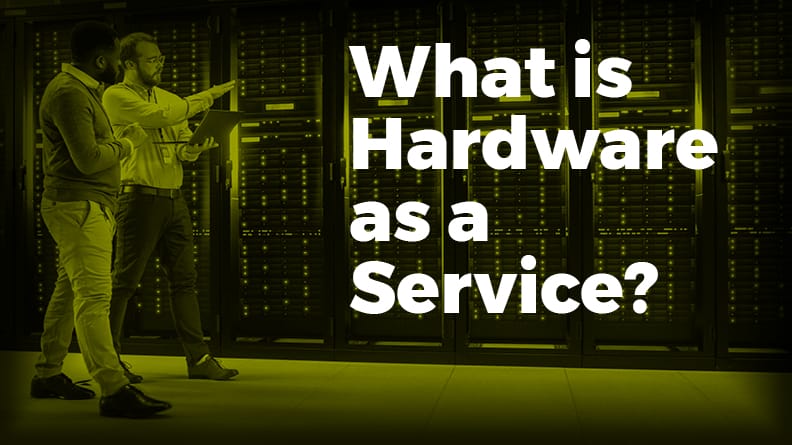
At its most basic, Hardware-as-a-Service (HaaS) allows businesses to procure hardware through a Managed Service Provider (MSP) as a monthly expense. This is sometimes called Device-as-a-Service (DaaS).
The MSP supplies hardware at the client’s site, and the MSP manages, maintains, and updates the devices in compliance with the terms of a service level agreement (SLA), which sets out both parties’ responsibilities.
If you’ve ever used Office 365 or Dropbox, you’ll be familiar with the similar Software-as-a-Service (SaaS) model. You download the software and pay a monthly fee for access, and in turn, the developer manages and updates the software and all the related backend infrastructure.
HaaS is the physical reflection of the same model.
Are There Different Categories of HaaS?
There are two broad categories of HaaS, on-premises and remote computing.
In on-premises HaaS solutions, the service provider outfits a customer with on-site equipment such as laptops, monitors, tablets, and desktop computer equipment.
Remote computing agreements allow customers to access computing infrastructure over the internet to increase their overall compute power or access off-site digital services and storage. When provided as a service, this is often called Infrastructure-as-a-Service (IaaS).
How Do HaaS Pricing Structures and SLAs Work?
While Hardware-as-a-Service pricing structures differ between providers, they generally consider the cost of the underlying hardware, associated interest, and additional services over the agreement term. The equipment is typically returned to the provider at the end of the agreement; therefore, the total monthly fees may be less than the assets’ purchase price, despite the additional attached services.
One of the primary benefits of using a HaaS provider is that the agreement is tax-efficient and cashflow friendly. Additionally, since they are buying in bulk, many HaaS providers can offer very competitive Hardware-as-a-Service prices.
What Are the Major Benefits of HaaS?
There are a significant number of benefits associated with HaaS for all scales of business, including:
Upfront Cost
The first and most apparent benefit is that Hardware-as-a-Service providers help other businesses outfit themselves without a huge upfront capital expenditure. By paying a monthly fee through an SLA, companies can access vital hardware while preserving both upfront capital and credit capacity.
Simplicity
Since the HaaS providers are responsible for the upkeep of the hardware and the three R’s, repair, replacement, and retirement, the customer is relieved of the burden of managing assets, warranties, device lifecycles, and the amortization of ageing hardware.
Flexibility
Business growth often requires new hardware or computing power to support the expansion and demands additional capital or credit to obtain that hardware.
Mature HaaS providers like F12 can offer a hardware service level agreement that provides flexibility, allowing the client to upgrade their assets at any time or add additional equipment at the initial monthly rate without extending the term.
Security
With a dedicated HaaS provider, you no longer have to worry about device maintenance and replacement, relying on your MSP to replace any faulty hardware quickly. F12 maintains a significant warehouse of spares to ensure our clients experience the minimum downtime possible.
When Should a Company Start Considering HaaS?
HaaS can be hugely beneficial to all business levels, from startups with limited capital to established businesses that want to outsource the responsibility of maintaining and upgrading their hardware.



